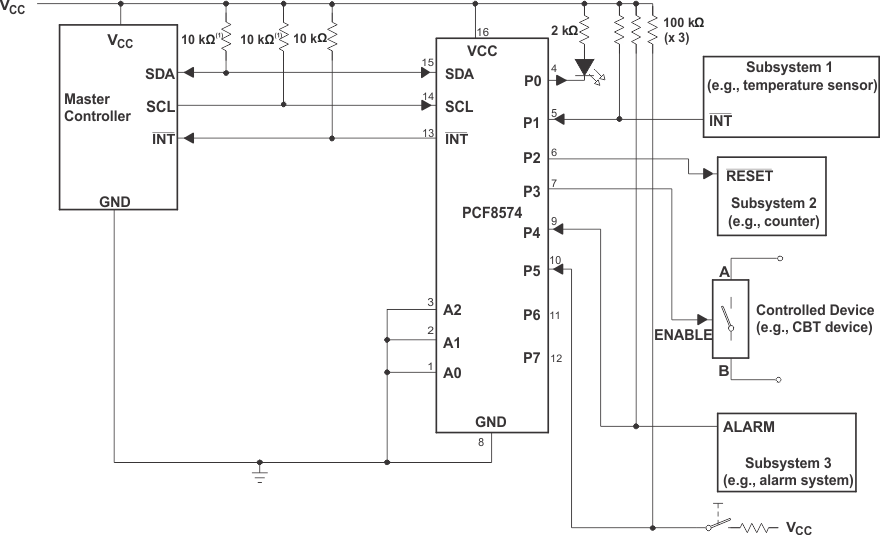ZHCSX36K July 2001 – September 2024 PCF8574
PRODUCTION DATA
- 1
- 1 特性
- 2 应用
- 3 说明
- 4 Pin Configuration and Functions
- 5 Specifications
- 6 Parameter Measurement Information
- 7 Detailed Description
- 8 Application and Implementation
- 9 Device and Documentation Support
- 10Revision History
- 11Mechanical, Packaging, and Orderable Information
8.2 Typical Application

A. The SCL and SDA pins must be tied directly to VCC because if SCL and SDA are tied to an auxiliary power supply that could be powered on while VCC is powered off, then the supply current, ICC, will increase as a result.
B. Device address is configured as 0100000 for this example.
C. P0, P2, and P3 are configured as outputs.
D. P1, P4, and P5 are configured as inputs.
E. P6 and P7 are not used and must be configured as outputs.
Figure 8-1 Application Schematic